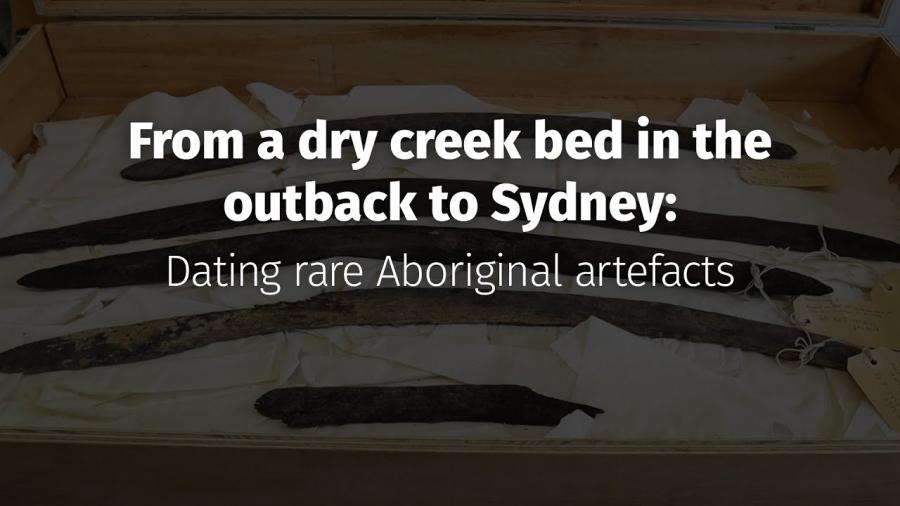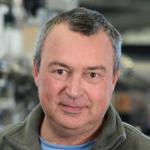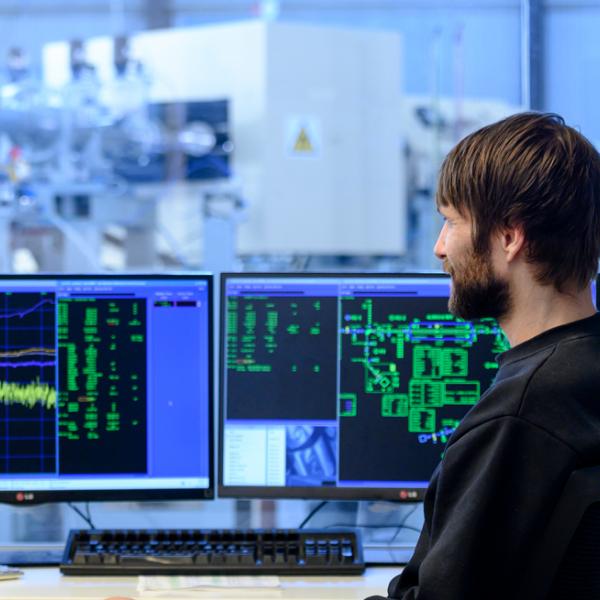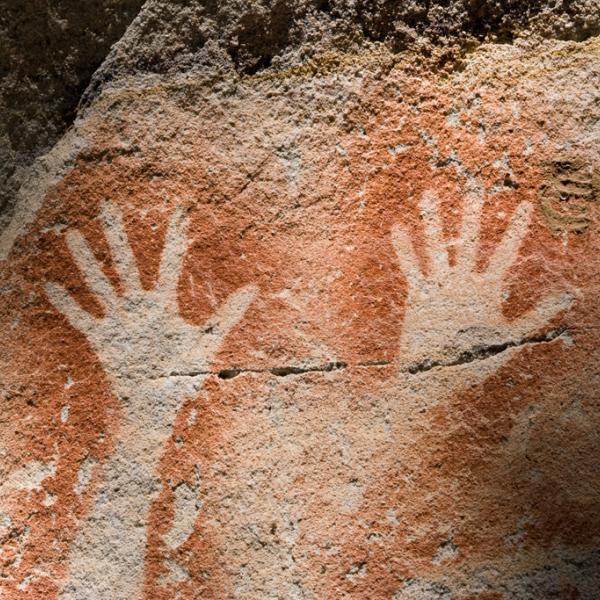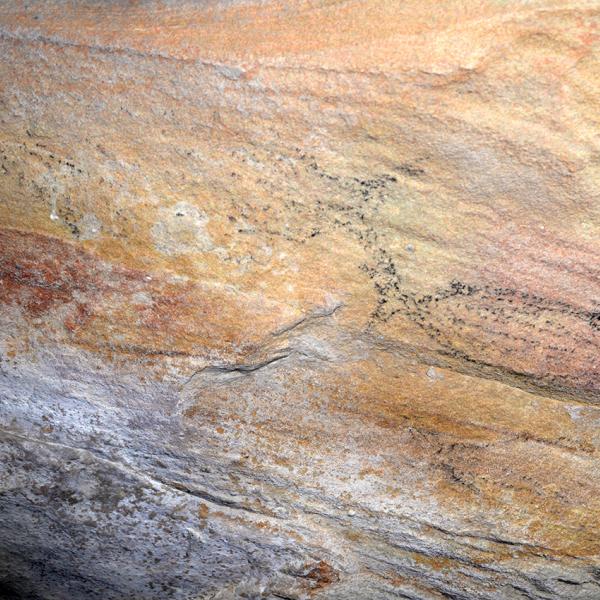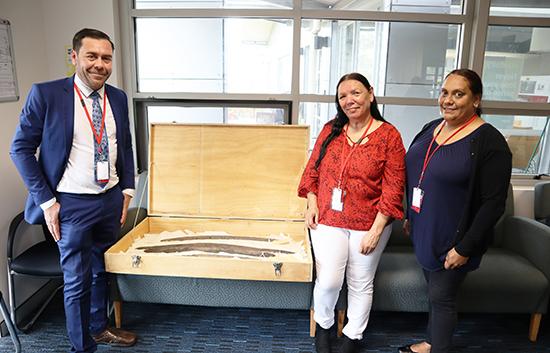
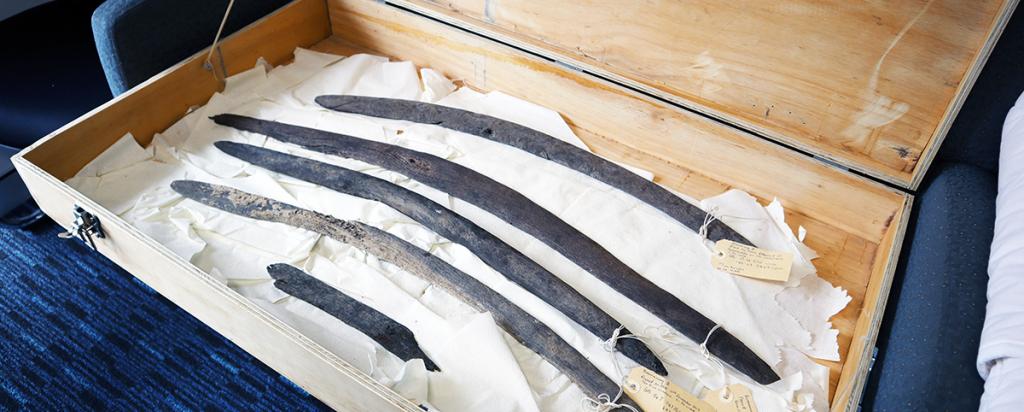
Published on the 13th November 2020 by ANSTO Staff
Recently, a small delegation, including Yandruwandha Yawarrawarrka representatives from the remote outback settlement of Innamincka SA, travelled to ANSTO to deliver rare wooden Aboriginal archaeological artefacts for measurements to determine their age and origin.
The traditional objects, believed to be throwing sticks and a digging stick, were used by ancestors of the Yandruwandha Yawarrawarrka people. The traditional owners of the land did not have any information about the objects or their origin.
The items were recovered over several weeks by Park rangers of the Innamincka Regional Reserve in a dry creek bed. The Yandruwandha Yawarrawarrka traditional owners were notified immediately of the find.
Joshua Haynes, former Chair of the Yandruwandha Yawarrawarrka Traditional land Owners Corporation and current Board member Cindy Shaefer, who were accompanied by archaeological consultant Sean Freeman, spent a day at ANSTO handing over the objects and taking a tour of the facilities where they will be examined.
“As traditional owners, we have learnt a lot about this country from our families, and we hope to learn more from these very significant cultural tools,” said Haynes.
“This country holds our ancestors stories but more importantly, still holds the physical connection to our ancestry.”
“I am looking forward to what ANSTO will be able to tell us about our ancestors who used this object. Our ancestors could have used these as early as 100 ago, or as far back as 10,000 years ago!”
ANSTO scientist Dr Vladimir Levchenko is overseeing the radiocarbon measurements of the wood, which contains carbon.
Very small samples of the wood were previously sent to ANSTO.
“I provided directions virtually on where and how to extract the samples we needed,” said Levchenko, who has considerable experience in radiocarbon dating of cultural heritage materials.
“We will be able to find out more about their age with great accuracy using one of our accelerators,” said Levchenko.
Other useful insights are anticipated using X-ray fluorescence scanning on ITRAX, supervised by Patricia Gadd.
ITRAX is useful in determining the elements within a sample, which could reveal the type of wood used to make the object.
While at ANSTO, the delegation saw how the analysis will be done on the ITRAX instrument, visited the graphitisation laboratory and the accelerator where the radiocarbon dating will be undertaken.
Because of COVID, there have been some delays in taking measurements and interpreting the data.
Levchenko hopes to have some dates by the end of the year.
The ITRAX results are expected sooner.
Many examples of Aboriginal wooden artefacts have been collected over the last 200 years with very few examples survived on-country.
Many items that were used by the first Australians were made of wood and other organic materials, and few have survived, even those of relatively recent age, said Freeman.
The relatively intact objects were carefully packed in a wooden crate for transport by vehicle overland from SA to Lucas Heights.
The visit happened just a few days before the start of NAIDOC Week. The delegation was welcomed to Dharawal land at Lucas Heights by Dharawal elder, Aunty Lola Ryan of La Perouse.
Once the analysis is complete, the objects will be returned to the traditional owners.
ANSTO is committed to using Western scientific techniques and infrastructure to support establishing the great antiquity and reinforcing the importance of Aboriginal cultural heritage.
